King John
One of the problems which Historical Fiction authors face is just that – where to start a story? There is always a before and an after, and sometimes the now depends on what readers know about what went on before the story begins.
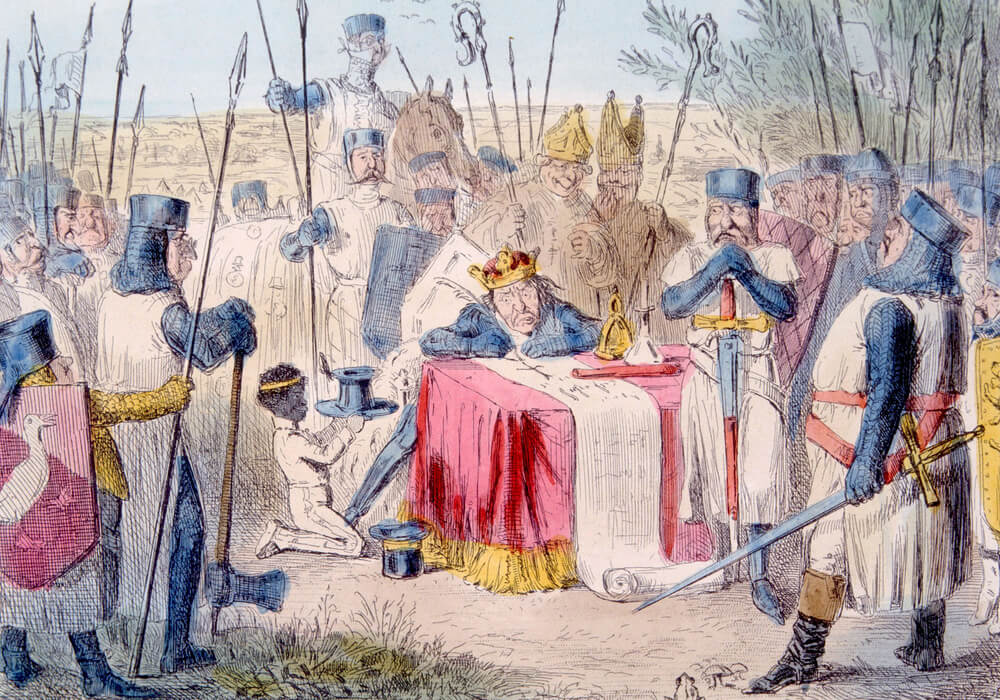
Although King John is famous for (allegedly) losing his treasury in a boggy inlet of the English North Sea known as, The Wash – his losing credentials did not begin there.
Born in 1166, RICHARD THE LIONHEART was the youngest son of Henry II and Eleanor of Aquitaine. He later became known as John Lackland, because he was not expected to inherit much of any note, nor was much expected of him, given his developing character. But fate intervened in his expectations.
Regent of England
In 1190 King Richard of England took the vow of the cross and set off for the Holy land on the third crusade. Together with his mother, Eleanor, they agreed to leave John in place as the governing regent of England. England’s chief Justiciar, William Longchamp, who was also the Bishop of Ely and Chancellor of England, was his mentor. Richard also nominated a young cousin, Arthur of Brittany as his successor should he not return from the crusade. Not exactly a vote of confidence in his brother Prince John.
While Richard set off for Marseilles to join his fleet sailing round from the English Channel, his mother left for Navarre to collect a bride for the bachelor king; she was also concerned that Richard might not return and leave her with John for a king.
Eleanor was now the undisputed matriarch of the Plantagenet dynasty which ruled from the Scottish borders, through Wales and Ireland and on the continental mainland from Normandy down to Aquitaine’s borders in the Pyrenees. It was no accident that she had a princess of the kingdom of Navarre in her sights; she could secure her southern border and provide a wife for Richard in one move here. So, she would collect Princess Berengaria and chase after Richard to have a wedding before aught befell the mighty King.
Fate played a card in her designs however because she didn’t catch up with her son until they arrived in the Straits of Messina. By this time it was Easter and no marriages could take place under church law.
What was John up to?
Eleanor did not tarry however; news from England told of John’s activities, which were not good. Alarmingly, he had fallen out with his mentor, Longchamp, and most of his barons. So, Eleanor high-tailed it back and left Richard and Berengaria to sort the marriage out for themselves while she went to fix the results of John’s incompetence.
The story of Richard and Berengaria will be published later this year and will be available on Amazon as usual. Take a look through this website for further information.
By now John’s indiscretions were causing alarm amongst his advisors, officials, and barons. A sexual predator, lecherous and treacherous, he was rejoicing in his position of King’s Regent holding a king’s power absolute. Eleanor failed to control him and he opened negotiations with the French king, Philip, in a presumption that Richard would not return. He was aided in this by the news that Richard had been taken prisoner when returning from Palestine and was being held for ransom by the German King/Emperor Heinrich.
John and Philip joined forces to raise money to persuade Heinrich to keep Richard prisoner – but they failed when the pope took an interest. As a result Richard did return, landing in England on 13th March 1194 with England 190,000 silver marks (several tonnes) worse off. This was more than the country’s GDP at the time.
Eleanor did her best to persuade Richard to forgive John, suggesting ‘evil councillors’ had been advising him. Richard forgave his little brother and then went to war with King Philip to recover the territories John had lost. This was a move which would be Richard’s undoing; he was struck by a crossbow bolt in an unconnected incident outside the minor castle of Chalus-Chambrol. He died of sepsis on the 6th April 1199.
King John
The result was a triumph for John, making him king. At the same time, it was a disaster for Eleanor who had to watch her son dismantle the Angevin empire which she had been working tirelessly to preserve for the future of her dynasty.
John’s next moves were a triumph of incompetence; apart from his odious character traits, (hide your wives, daughters, and female servants if he came visiting) he believed himself to be a negotiator of distinction. Sadly, he promptly lost control of Plantagenet territories, starting with Normandy and working his way south. His mistakes were many, either accepting disadvantageous terms or losing out by military means. By 1204 he had lost the lot. He so disappointed his mother that she died in disappointment at Fontevraud Abbey on the 1st of April of that year.
Eleanor was not the only woman John would disappoint in this sad affair.
Berengaria, now the dowager Queen Consort of England, a widow, was also to be denied her rights by the odious new King of England. He held back all the money due to her as income from her dower holdings in England and elsewhere, and of her pensions due as a widowed queen. As a result, she had to enter into lengthy correspondences with John, Pope Innocent III, King Philip of France, and anyone else she thought might be able to help to try and recover her dues.
In England, which was all that John had left, the Barons, and Lords, the church and the citizens were struggling beneath John’s ever increasing demands for more money “to recover my lands in France.”
The Magna Carta
John did not succeed and many of those in England, including those who had lost their lands in France, began to plot against him. The result of that was a charter of rights, the Magna Carta. In 1215 John was compelled to sign it.
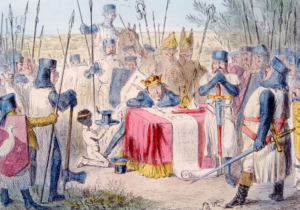
Whether he had fully understood it at the time or not, it was soon brought to his attention that it removed his rights of, ‘King Absolute’. As a result, certain powers and rights would pass down the chain to lesser officials, barons and certain citizens.
Once he understood this he repudiated the document, complained to the pope and thus began a civil war. As John had only recently recovered from excommunication by the pope, it made any support by Innocent a little less than wholehearted.
Revolt
As a result of his repudiation of the Magna Carta, John was soon facing a revolt to remove him from power. This was led by a French prince when King Philip sent his son, Louis, to lead the revolt. The barons in revolt would declare Louis as King of England in Westminster on the 2nd of June 1216.
John visited Lincoln in October 1216 and travelled from there to Newark, a short distance away, where he died on the 19th of October 1216, aged 49. His son, Henry succeeded him but was only 9 years old. As a result, a council of regents was holding England together.
By 1217 England had been lost south of a line from Lincoln to Bristol and was in danger of losing the war; if Lincoln fell England would fall to the French and we’d all be speaking French.
You can find the story of the siege of Lincoln castle on the 20th of May 1217 in ‘Wars of the Magna Carta’.
Berengaria’s account will be available later in 2021, and the story of John’s successor, his son Henry III will also be available soon.
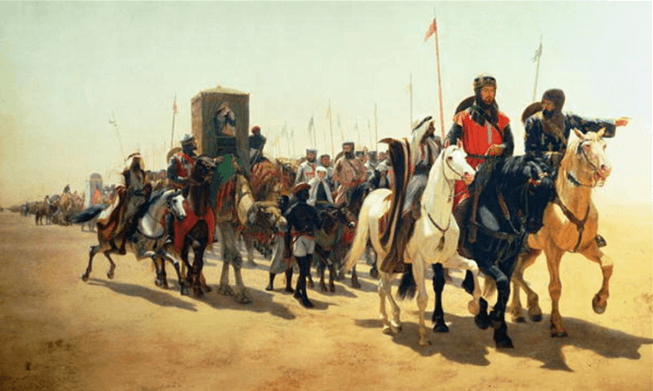
When the crusaders left for the holy lands (Outremer) in 1096-1099, the intentions of some leaders were more opportunistic than a mission to capture Jerusalem; some harboured the idea of carving out territories for themselves. As you can see in the map below, many were successful in that ambition. Thus the Crusader states were formed and kings created.
Antioch, Edessa, Tripoli, and Jerusalem are some of the most notable states. Plus, from the time of Richard the Lionheart in 1190, Cyprus was also included.
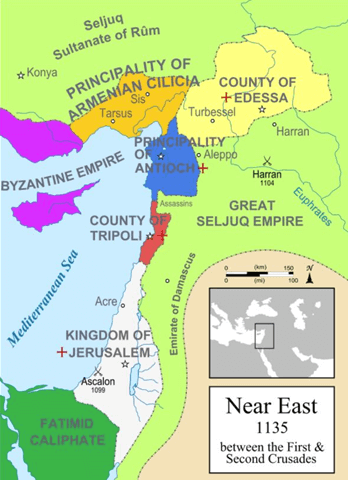
By the time of the third crusade, 1189-1192, the nature of these states and the need to defend them led to the creation of some impressive constructions.
The story of the First crusade can be found in the Wayward Prince series, book two, ‘Warriors of the Cross‘. This is the story of Robert, Duke of Normandy, a heroic tale of the first man to be offered the crown of Jerusalem.
By the time that Richard made it to the area, many fine buildings had been built; we show a few of them below. These are connected to the personal experiences of Richard’s new bride, Berengaria of Navarre, who he married en-route to Palestine in Cyprus.
Berengaria’s story will be available on Amazon later in 2021.
This is Limassol castle – the present architecture is from the Ottoman occupation.
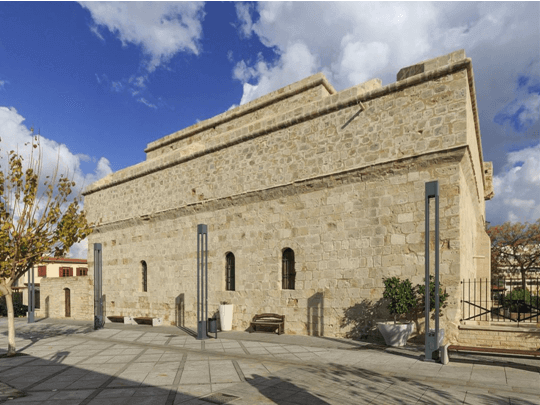
When Richard landed here it was to find and rescue his intended bride, Berengaria of Navarre, from the clutches of the self-styled Emperor of Cyprus, Isaac Comnenus.
Richard was not best pleased and chased and captured Isaac so he could take control of Cyprus for the crusaders. Isaac surrendered from Kyrenia castle on the basis that his daughter would not be harmed and he would not be shackled in iron.
Richard kept his word – shackling Isaac in silver and dumping him in Margat Castle (now in Syria) never to be seen again. Isaac’s daughter was added to Berengaria’s household and ended up in Europe.
When Richard had captured Isaac he declared himself King of Cyprus and then married Berengaria in Limassol castle; As a result, at one and the same time she became Queen Consort of England and Cyprus. The outline remains of a chapel can be seen in the undercroft, but Limassol University inform me that it is of a later construction. However, it is the same site as the St Georges chapel where the pair married.
When Richard left the island he sold it to the Knights Hospitaller and the fort was rebuilt by Guy de Luisignan in 1193 on a Byzantine site.
Kyrenia Castle – Cyprus.
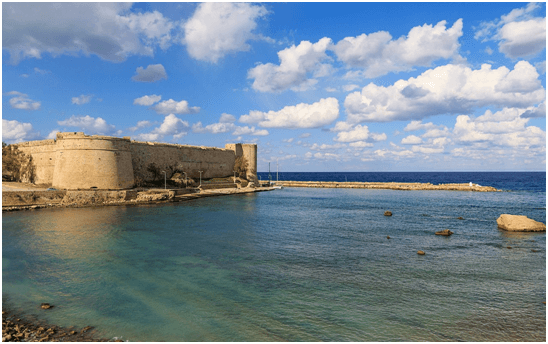
Margat Castle – Now in Syria. Last known location of Isaac Comnenus.
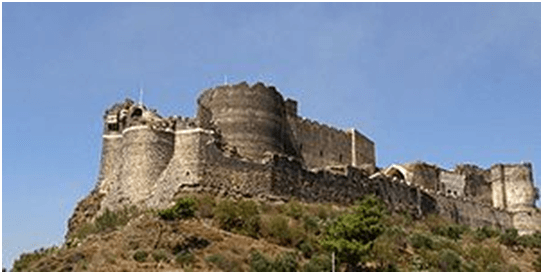
One of the better known sites is the ‘Krak des Chevaliers’ – now in Syria.
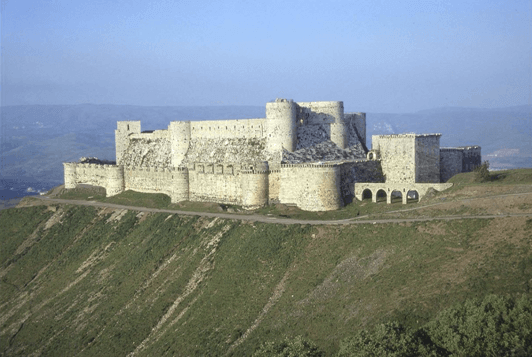
It is one of the most impressive military constructions in the world. It was begun by the Knights Hospitaller in 1140, on the site of an originally Kurdish construction.
Richard’s landfall in the Holy land was Akko, now Acre in Israel.
What he found was a walled town that had already been under siege for months by a Christian army. However, they did not have the siege engines necessary to break in. To make matters worse, the Christians themselves had come under threat from Saladin’s army. It was camping on the hills, thus sandwiching the Christians between the town and the Muslim army.
When Richard arrived he had the necessary equipment to build siege engines in his ships. As a result, it wasn’t long before the gates were down and the town under occupation.
With harbours on either side, the crusading army could easily resupply despite Saladin’s army camping on the landward side. The crusaders dug a WWI trench system to prevent attack by the Muslim cavalry.
In a later period, the town was retaken by the Muslims and what they found impressed them. A great citadel has been built during the period after the first crusade, consisting of a tower (donjon) and a series of great cathedral like halls.
So impressed were the capturing army that their leader instructed that the buildings should not be damaged. Instead, they were hidden to cover the evidence of the Christian occupation.
The site was then buried under tonnes of earth and forgotten about. However, it was unearthed recently.
There is an Israeli website where the archaeological achievement of the unearthing can be read.
Some of my photographs are below:
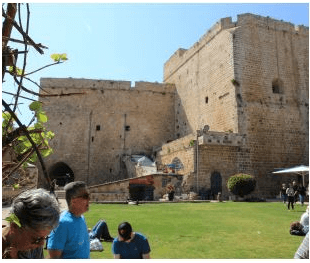
The Tower or Donjon.
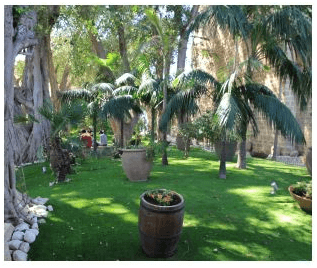
Berengaria’s garden.
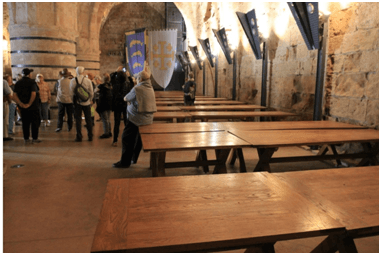
The refectory.
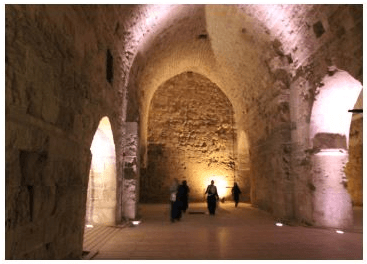
One of the halls.
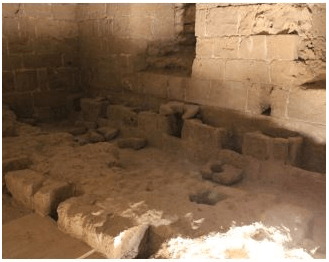
The communal lavatories.
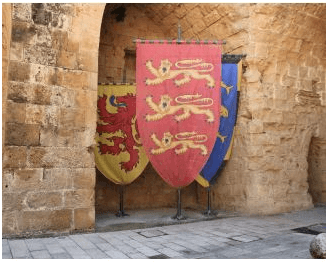
Crusader flags.
It was within these buildings that Queen Berengaria stayed for a while before Richard’s army set off for Jerusalem.
The full story of the siege of Acre will feature in Berengaria’s story, due for release in 2021. Both volumes will be available on Amazon – Author, Austin Hernon.
More information can be found on our website: www.history-reimagined.co.uk
King John and his problems – And there were many.
John’s attention was diverted and his prestige disastrously affected by relations with the papacy. In the disputed election to the see of Canterbury following the death of Hubert Walter, Pope Innocent III quashed the election of John’s nominee in procuring the election of Stephen Langton (December 1206). John, taking his ground on the traditional rights of the English crown in episcopal elections, refused to accept Langton. In March 1208, Innocent laid an interdict on England and excommunicated John (November 1209). The quarrel continued until 1213, by which time John had amassed more than £100,000 from the revenues of vacant or appropriated sees and abbeys. But such a dispute was a dangerous hindrance to John’s intention to recover his Continental lands. In November 1212 he agreed to accept Langton and the pope’s terms. Apparently at his own behest, he surrendered his kingdom to the papal nuncio at Ewell, near Dover, on May 15, 1213, receiving it back as a vassal rendering a tribute of 1,000 marks (666 pounds 13 shillings 4 pence) a year.
He was absolved from excommunication by Langton in July 1213, and the interdict was finally relaxed a year later. John thus succeeded in his aim to secure the papacy as a firm ally in the fight with King Philip of France and in the struggle already pending with his own baronage. But his treatment of the church during the interdict, although arousing little if any opposition among the laity at the time, angered monastic chroniclers, who henceforth loaded him with charges of tyranny, cruelty, and, with less reason, of sacrilege and irreligion.
England as a fief of Rome lasted many years but over time it stopped sending the annual payments and released itself from vassalage sometime later when Henry VIII decided to be done with Rome and the popes.

